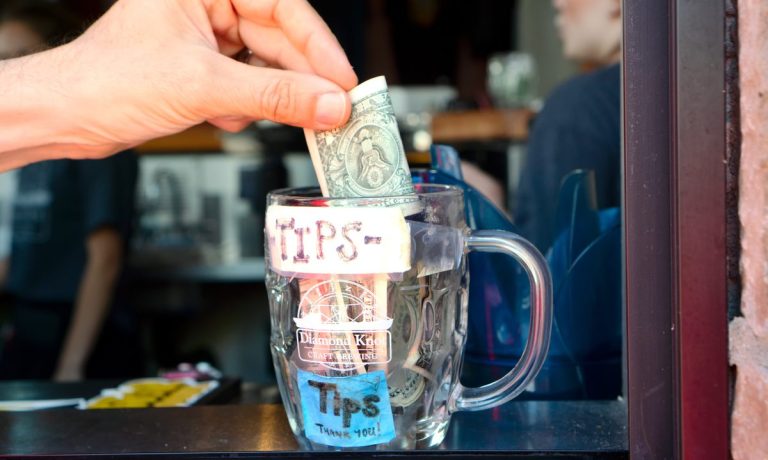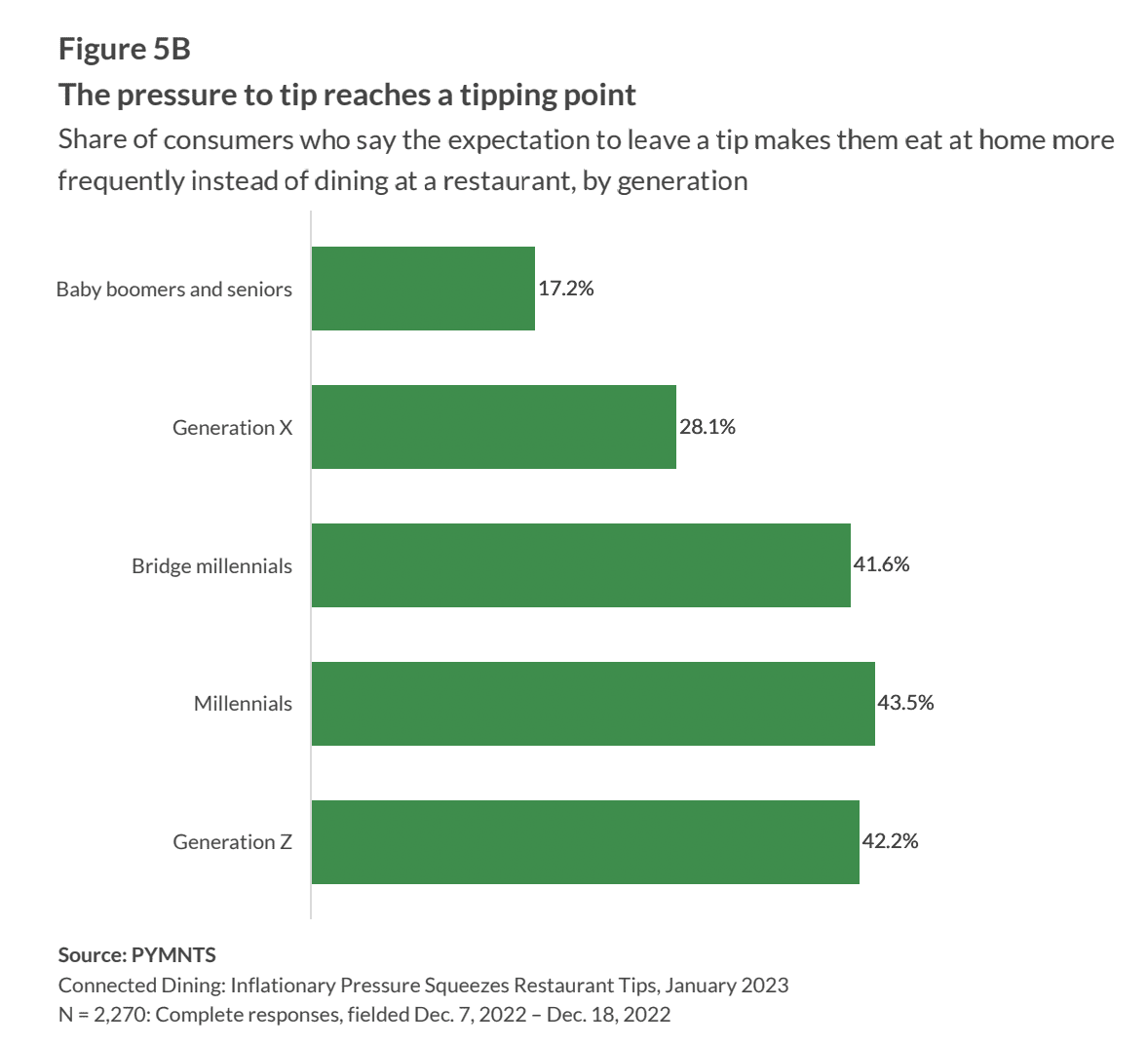
PYMNTS data finds millennials may tip more than other diners, but it’s hurting their loyalty.
By the Numbers
Research from PYMNTS’ study “Connected Dining: Inflationary Pressure Squeezes Restaurant Tips,” which drew from a survey of more than 2,200 U.S. consumers, found that millennials are the most likely of all restaurant customers to tip. Specifically, 80% of millennials reported that they left a tip on their last restaurant meal, notably higher than the 75% of consumers overall who said the same and higher than any other generation.

Yet the pressure that millennials feel to tip has its downside for restaurants. The study found that 44% of millennials said the expectation to leave a tip makes them eat at home more frequently instead of dining at a restaurant, a greater share than said the same from any other generation.
The Context
Indeed, the pressure to tip has increased in the recent past, with gratuity now not only expected for delivery and full-service restaurant orders but also for pickup. Kickfin Co-CEO Brian Hassan discussed this trend in an interview with PYMNTS for the March edition of the Money Mobility Tracker®, “Inflation Makes Technology Table Stakes for Restaurants,” created in collaboration with Ingo Money.
“The total addressable market of digital tipping … has grown in multiples,” Hassan said. “What used to be only in full service is now in full service, quick service, airports, stadiums, personal services and the list goes on. It touches our lives every day and almost every transaction we might encounter outside of retail.”
These expectations may only increase in the future.
Jordan Boesch, founder and CEO of 7shifts, explained to PYMNTS that with digital tipping, additional kinds of gratuity are possible — not just adding a given percentage to the check at the end of the restaurant experience, but also chipping in some money for people who are consumer-facing, behind-the-scenes, or even across various parts of the hospitality industry.
“Certainly, more consumers are tipping, but I would also say that we’re also seeing more restaurant brands looking at tipping more equitably across the organization,” Boesch said. “Some of the great brands are looking at how they can make these processes more equitable to all of their staff, not just specific departments, and maybe not just specific seniority levels.”